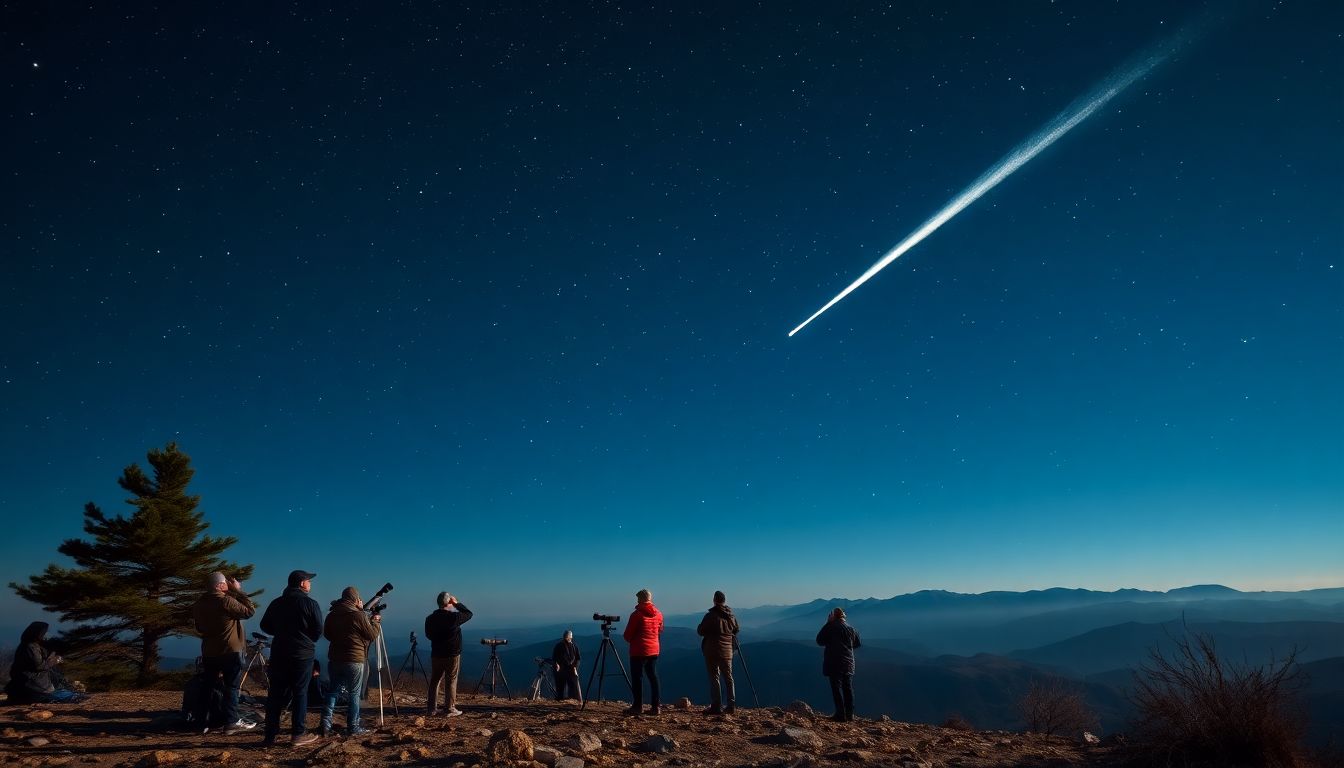
How to Find the Perfect Time to Spot the Comet Tonight: A Complete Guide
Introduction
Seeing a comet light up the night sky is a rare and stunning sight. These icy visitors from space show us their beauty only once in a while. The secret to witnessing this moment? Timing. Picking the right hour makes all the difference between missing the show or catching a celestial wonder. This guide shares simple steps, expert tips, and the best tools to help you find the perfect time to see the comet tonight. Prepare yourself for an unforgettable experience among the stars.
Understanding Comets and Their Visibility
What Are Comets?
Comets are glowing balls of ice, dust, and gas that swirl around the Sun. They originate from the farthest corners of our solar system, in areas called the Kuiper Belt and Oort Cloud. When they come close enough to the Sun, they develop a bright tail that points away from the star. Some comets appear once every 75 to 76 years, like Hale-Bopp, while others orbit much faster. Knowing what we are looking at helps us appreciate their fleeting beauty better.
Why Timing Matters When Viewing Comets
Comet sightings depend heavily on time. Their positions change as they orbit the Sun, so catching them at the right moment is crucial. The time of night affects how clear the sky is, and weather plays a big role. Bright moonlight or city glow can hide these delicate visitors. To enjoy the show, you need to plan around moon phases, weather forecasts, and your location. Timing can turn a missed occasion into a once-in-a-lifetime sighting.
Checking Comet Visibility Updates and Predictions
Using Astronomical Data and Resources
Today, many websites and apps make finding comets easier. Tools like Heavens-Above, Stellarium, and Sky & Telescope provide real-time tracking charts. They show where the comet will appear in the sky and when it will be most visible. Learning to read these charts means you can spot exactly when the comet rises, reaches its highest point, and sets. These tools often include alerts for upcoming celestial events, helping you stay prepared.
Consulting Official Astronomical Events and Alerts
Stay connected with space agencies and local astronomy clubs. Agencies like NASA and ESA announce major comet appearances and celestial events. Local clubs often share specific tips about viewing spots and optimal times nearby. Watching for official alerts or event calendars ensures you don’t miss a rare opportunity to see a comet at its best.
Identifying the Best Time to View the Comet
Considering the Comet’s Position in the Sky
To find the comet, you need to know its rising, culmination (highest point), and setting times. These are called the rise, culmination, and set moments. Star charts and planetarium apps like Stellarium can help you find these times accurately for your location. When the comet is at its highest in the sky, it’s usually best to view because it stands out the most.
Time of Night for Optimal Visibility
Many comets are easiest to see during late evening or early dawn. The period just after sunset or before sunrise often offers the darkest sky. For example, recent comets like Neowise were best viewed around 2 a.m., when the sky is most quiet and free of city lights. Planning around these windows helps you catch the comet before it slips away.
Moon Phases and Light Pollution
A bright full moon can drown out the faint glow of a comet. The best nights often happen during a new moon, when the sky is darkest. If you want a perfect view, plan your trip around the new moon phase. Additionally, choosing remote spots like rural fields or national parks can cut down on light pollution, giving you a clearer view of the sky.
Preparing for the Perfect Comet Viewing Session
Essential Equipment and Clothing
Bring binoculars or a small telescope for a closer look. Smartphone apps can also help you locate the comet in the sky. Dress warmly, especially during late-night outings. A comfortable chair, a warm layer, and a red flashlight to read maps without ruining your night vision all help you enjoy the show longer.
Optimal Viewing Locations
Scout dark-sky parks, open fields, or elevated spots away from city lights. The less light pollution, the better your chances of seeing faint details. Avoid cloudy nights, and pick places with clear, unobstructed views horizon to horizon. A quiet, dark location can turn watching into a peaceful escape.
Weather Conditions and How to Monitor Them
Clear skies are a must. Cloud cover, fog, or high humidity can block your view completely. Use weather apps like Weather.com or specialized tools such as Clear Outside. Check the forecast daily and stay flexible if the weather looks poor. Sometimes, a slight change in plans can make the difference between viewing and missed opportunity.
Expert Tips and Additional Resources
Hear it from experienced skywatchers: arrive early to find your spot, and give your eyes time to adapt to darkness. Use red light flashlights for reading your maps or adjusting your equipment without ruining your night vision. Patience is key—sometimes clouds drift by, but stellar sights can still happen if you wait. Don’t hesitate to reach out to online forums or local clubs for last-minute tips on the best spots.
Conclusion
Spotting the perfect moment to see a comet involves a little planning but is well worth the effort. Use star charts, weather forecasts, and official alerts to pick your time wisely. Find a dark, quiet place, and prepare your gear in advance. When you get the timing right, the brief glimpse of a comet’s tail glowing in the night sky will be one you never forget. Get ready, stay patient, and enjoy one of nature’s most beautiful surprises.

